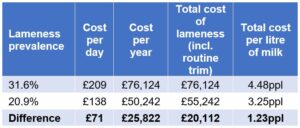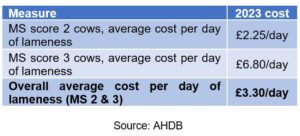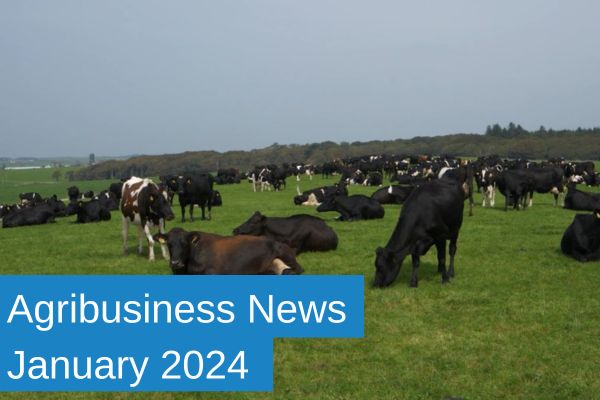MMN January 2024 – What is the Cost Benefit of Whole-Herd Routine Foot Trimming?
12 January 2024As many herds are now halfway through the housing period, the incidence of lameness may become more apparent. Prolonged exposure to damp/soiled passageways may have contributed towards additional foot infections such as digital dermatitis and foul. Furthermore, extended standing times on concrete could have increased the prevalence of hoof lesions including solar ulcers and white line disease, compared to the incidence of lameness during the grazing period.
Now may be a suitable time to review the business’s approach to controlling lameness, and to consider the cost-benefits of implementing a whole-herd, routine foot-trimming program in addition to existing control measures.
The economic impact
Lameness can significantly affect milk sales by reducing dry matter intake, cow fertility and milk yield. Additional factors such as medicine costs and premature culling will contribute towards smaller profit margins.
Recent figures below from AHDB suggest that the average cost of lameness equates to £3.30 per cow per day, for every day that a cow is ‘lame’ (i.e. with a mobility score of 2 or 3). The cost of lameness can differ substantially between mobility score and disease type. For example, a solar ulcer is estimated to cost around seven times more than a case of digital dermatitis.
The average cost of lameness in UK herds based on mobility score (MS)

According to a study conducted between 2015 and 2016, the average prevalence of lameness in the UK dairy herd was estimated to be 31.6% (Griffiths et al, Frontiers in Veterinary Science, 2018). The table below shows how much this would cost a 200-cow dairy herd averaging 8,500 litres per cow per year.

Routine foot trimming
Abrasive concrete yards can lead to an unbalanced amount of wear on a cow’s claw, stimulating excessive horn growth particularly on the outer heel. Routine foot trimming can help to balance out horn growth allowing for better weight distribution and locomotion, reducing the risk of future lameness. Correct trimming and ‘dishing out’ in between the claws can also help to reduce the spread and severity of foot infections such as digital dermatitis.
It is recommended that routine foot trimming is carried out every 6 months, ideally between 60-150 days in milk and before drying-off.
The cost-benefit of foot trimming
Figures suggest that a bi-annual whole herd trim can reduce the incidence of lameness by 34% (Manske et al, 2002). This would indicate that the prevalence of lameness could be reduced from 31.6% to 20.9% in the average UK dairy herd.
Routine trimming undertaken by a professional can range from £10-£15 per cow. This would equate to £4000-£6000 per year in a 200-cow herd. The table below shows a cost-benefit analysis of routine trimming on a 200-cow herd averaging 8500 litres per cow per year based on trimming costs of £12.50 per cow.

In conclusion, the cost of routine whole-herd foot trimming, in conjunction with curative treatments and mobility scoring could lead to cost savings of around £20,000 per year in an average UK dairy herd, equating to 1.23ppl.
References available upon request.
Marcus Fox, marcus.fox@sac.co.uk; 01539 769059
Sign up to the FAS newsletter
Receive updates on news, events and publications from Scotland’s Farm Advisory Service

